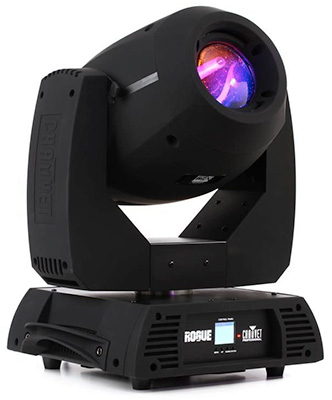Stage Lighting 101, Part 1: Understanding the Basics
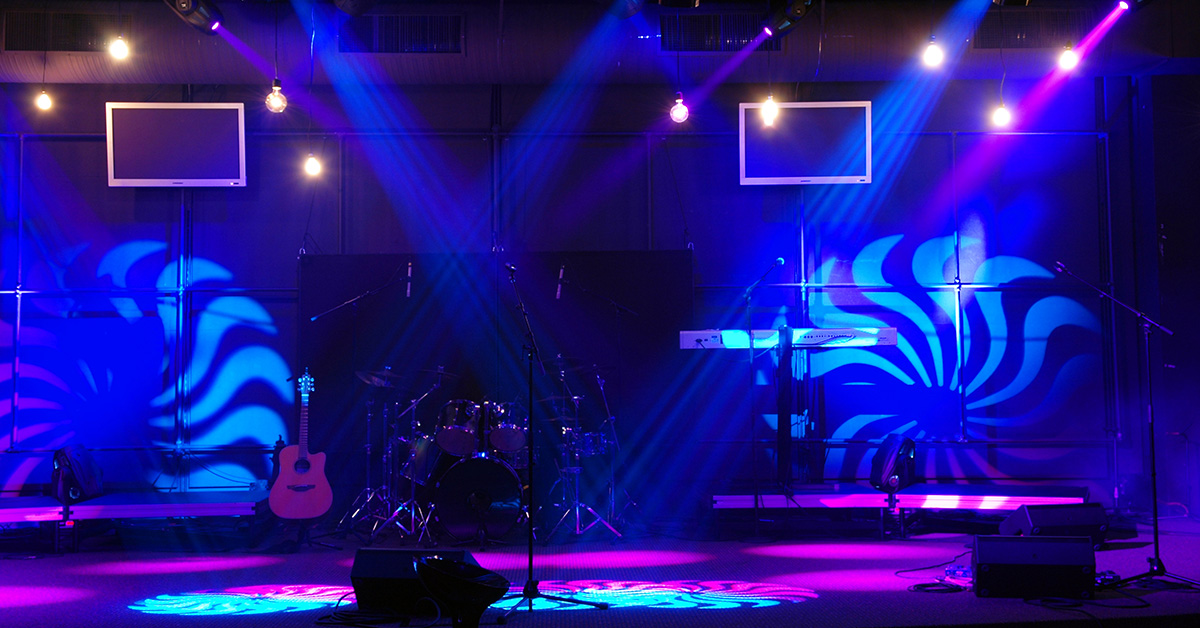
Lighting. Just like sound consists of waves that are received by our ears, light is simply higher-frequency wavelengths that are received and interpreted by our eyes. And just like sound, the waves can be chaotic or ordered, random or thoughtful. And with creative forethought, those wavelengths and their combinations can be creatively arranged to enhance moods. The performance of light, just like music and sound, can be an art form. But before you can rise to the level of artful expression, you must master the fundamentals of stage lighting. The same way that a musician must master scales and rhythms on a musical instrument, mastery of light demands an understanding of lighting instruments and their purposes. To begin the journey of crafting stage light as a performance-enhancing tool, let’s start with the rudiments of light.
■ Lights allow us to see. Have you ever watched a performance or production in a cave, completely absent of light? Of course not. Visible wavelengths of light are required for us to see.
■ Lights, especially stage lights, allow us to create a mood or craft an atmosphere for a concert or performance. There are no hard-and-fast rules to create mood. It’s a creative process that hopefully supports a story or song.
■ Lights need to enhance and balance all the components of a stage performance. Where is the focus on the stage? What should be highlighted? What should be de-emphasized? Consider all the pieces and their priorities when creating a composition and painting the stage with light.
■ Stage lighting design can create plausibility or reality to draw an audience into a time period and out of the hall or auditorium where they presently reside. A play or performance set in the distant past can use dim stage lighting to mimic the time period when interiors were illuminated by candles.
■ Light systems can reinforce the mood or action of a performance. Whether it’s music, a story, a dramatic interpretation — good stage lighting can elevate the performance through the use of color, angles, intensity, and effects.
■ Light effects can sculpt actors and musicians and make them seem larger-than-life, drawing them into the foreground and setting them apart from a two-dimensional stage.
That covers the purposes of stage lighting. Now let’s discuss how we accomplish stage lighting goals by defining the tools of the trade. Here’s a short guide to the lighting instruments (fixtures or units) in the lighting designer’s tool kit.
Stage Lighting Fixtures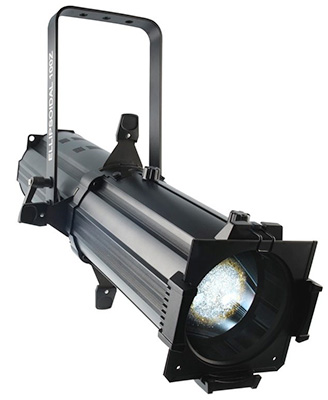
Ellipsoidal — Ellipsoidal Reflector Spotlight (ERS), is a light used to highlight certain subjects or stage pieces with a relatively narrow beam angle. This light is best used for when you want to draw attention to a person by using multiple units. ERS stage lights always have adjustable focus and can have gobos placed in them to project patterns or logos.
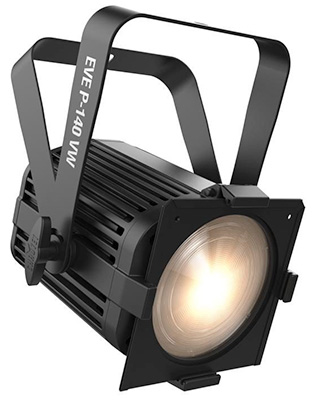
PAR — Short for parabolic reflectors, these are lights used as wash fixtures. These lights can cover large parts of the stage to fill in gaps that the spotlights do not cover or to wash the entire stage. These light fixtures typically do not have any sort of zoom or focus option, but come in a variety of lens types to get different beam angles. This is the most common type of stage light fixture you will see, because it is generally the most cost effective while providing the most coverage.
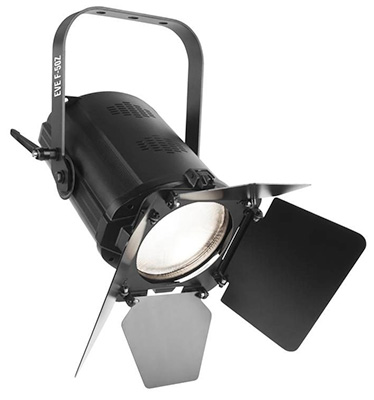
Fresnel— These stage light fixtures are the happy medium between a PAR and an ERS. They have a zoom function but not a focus and usually cast a much “softer” light than ERS light fixtures. This type of light also comes in handy when you cannot hang a fixture in an optimum location and need adjustable optics to help achieve the look you want.
Moving Head— These light fixtures come in a variety of different flavors and designs, such as a spot, wash, beam, and hybrid. Each of these names refers to the beam angle range of the light fixture. Beam is the narrowest, spot is a little wider, wash is the widest, and hybrid could be any combination of those three. These lighting units also have color capability, movement, gobo patterns, and a long list of other functions. As the most versatile stage lighting option, they allow you to really take a show or performance to a whole new level.
These are just a handful of the fixture types in the lighting world but are among the most common and widely used. With just these light fixtures, you can create a professional show and provide almost any look you can imagine.
Hanging the Light Fixtures
Now that you understand the lighting gear and equipment and can envision how you want the stage to look, what next? Here are a few stage lighting techniques and guidelines on how and where to hang your fixtures to get the look you desire.
First and foremost, any time you are hanging light fixtures, the most important thing is safety. Make sure when your light fixtures are going in the air that they are flown by a qualified professional with the right hardware and equipment. Typically, all fixtures are attached to steel pipe or truss with lighting clamps. Many light fixtures will use only one clamp, but some will use two. Always refer to the manufacturer specifications when hanging a stage light fixture. Every fixture also needs to have a safety cable wrapped around the yoke or handle of the fixture and the pipe or truss it’s connected to.
Light Fixture Placement
So where do you place your stage light fixtures? This depends on many variables, such as the desired look, stage design, ceiling height, and weight and throw distance of the fixtures. Here are a few different examples.
Single-point lighting: This is the simplest type of light placement and in fact mimics something we see every day — the sun! It has the most natural look and can have a dramatic lighting effect. It also draws attention, but can give a person onstage a very flat, two-dimensional look. Typically, when doing a single stage light from the front, you would want the light to be on-axis with the subject and about 30? up from the subject.
Two-point lighting: This is similar to single-point lighting, but it gives a more three-dimensional look to the subject onstage. Typically, there is one light coming from in front of the subject on-axis about 30? up. The second light is positioned behind the subject and is often a different color to add some dimension and create a sculpted look to the subject. The light coming from behind is usually 30?–40? up and about 60?–70? off-axis to provide depth and stay out of the audience’s eyes.
Three-point lighting: This next step is how most live productions choose to light their performers on stage. Three-point lighting is a technique that eliminates most shadows from the audience’s perspective, which also makes it a great choice for keynote presentations and public speaking. Three-point stage lighting uses two lights out front, about 45? off-axis and 30? up. Then the third light is placed behind and about 30?–40? up and 60?–70? off-axis.
Four-point lighting: This stage lighting technique comes in handy when video is involved. The previous techniques can be problematic for video, as they tend to have shadows. While shadows can be a good thing for many performances and shows, they are not ideal when shooting video. Four-point light is exactly like three-point lighting, but the fourth light is placed out front, directly on-axis with your subject. With three lights out front, though, you will need to modify the intensity of each light so that they work well together to create a nice well-blended look. Some stage designers also add more lights to a backdrop or wash the back of the stage with color to create stage depth for the cameras.
Hopefully, now you feel primed and ready to imagine and create your first lighting design and take your next live event to a whole new level. Stage lighting can easily be just as important as audio when it comes to communicating your message or music.
If you have any questions about stage lighting or what light fixtures would work best for your application or production, don’t hesitate to reach out to your Ledshow Sales Engineer.



